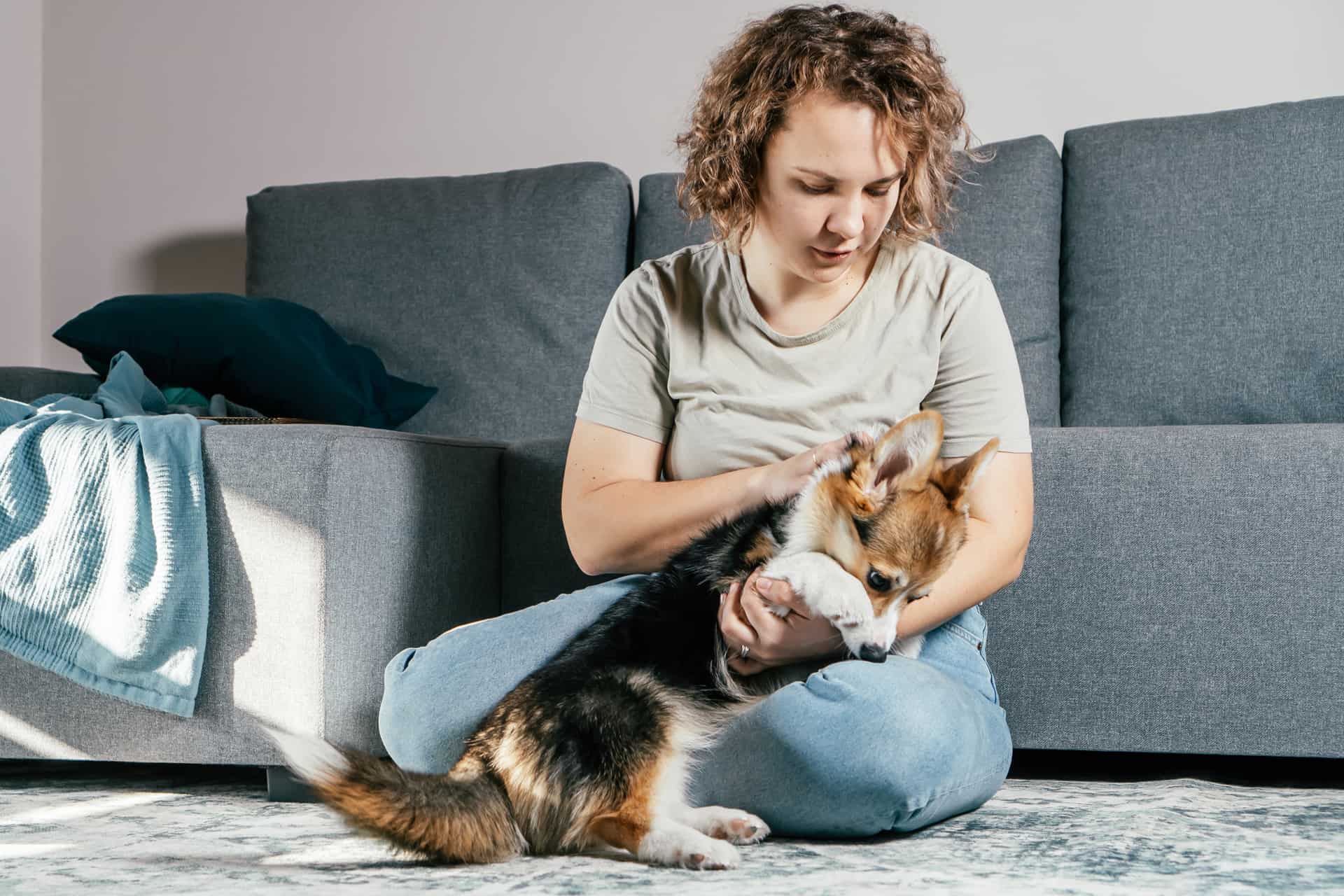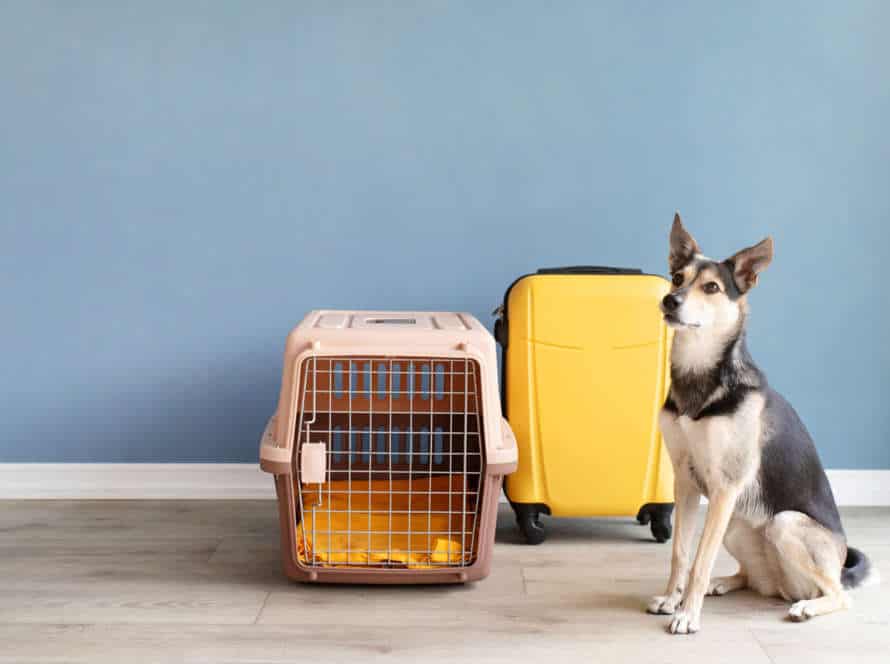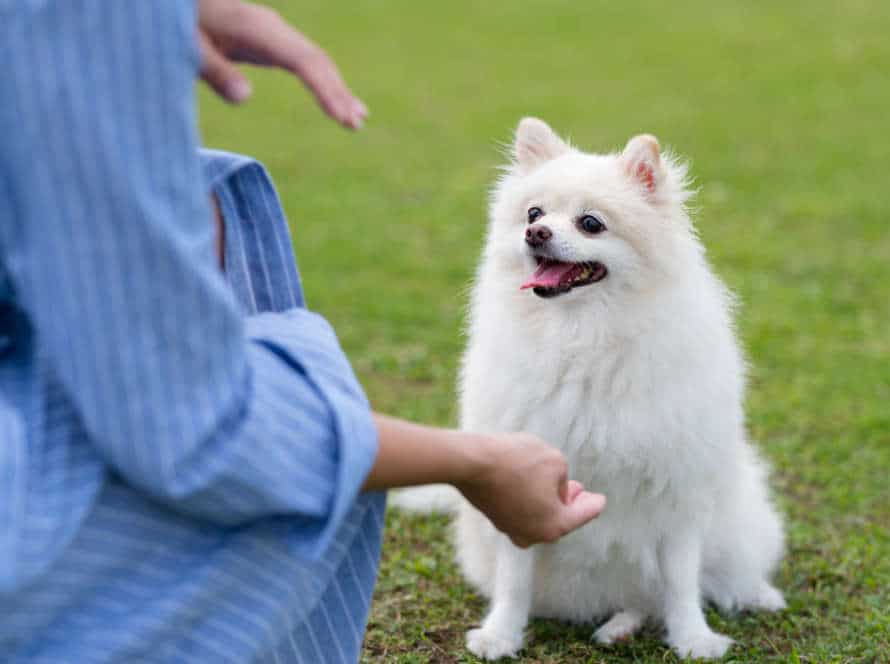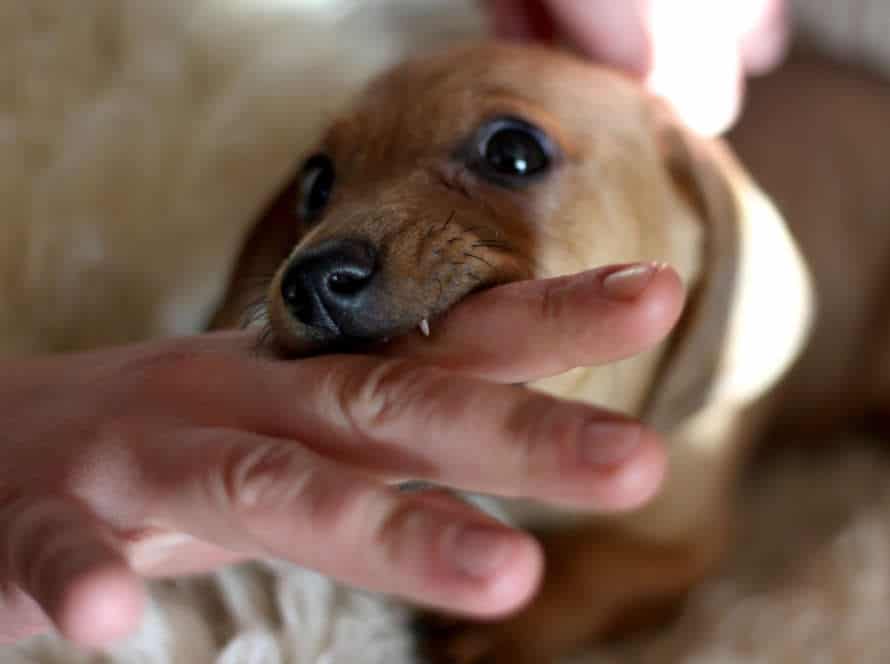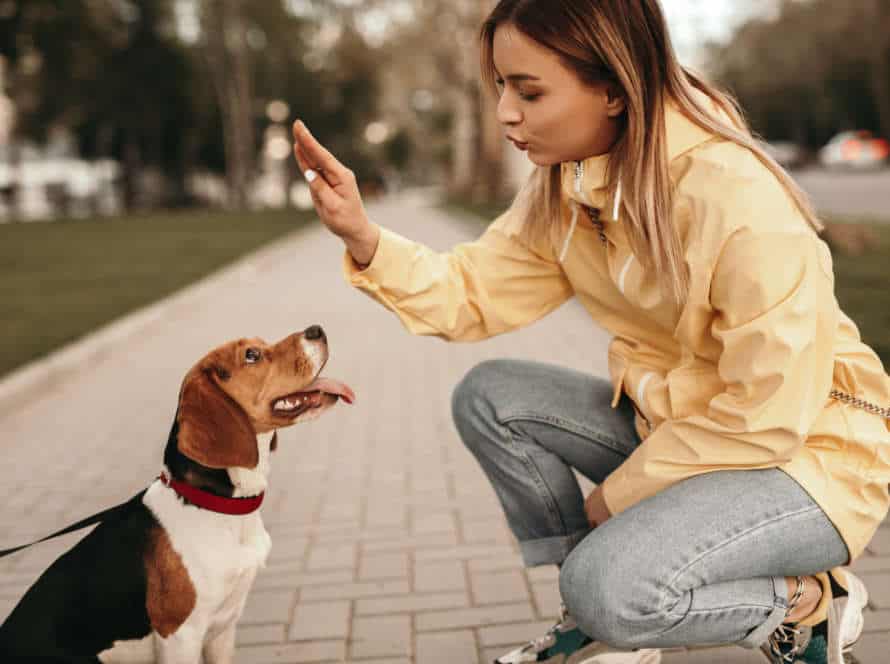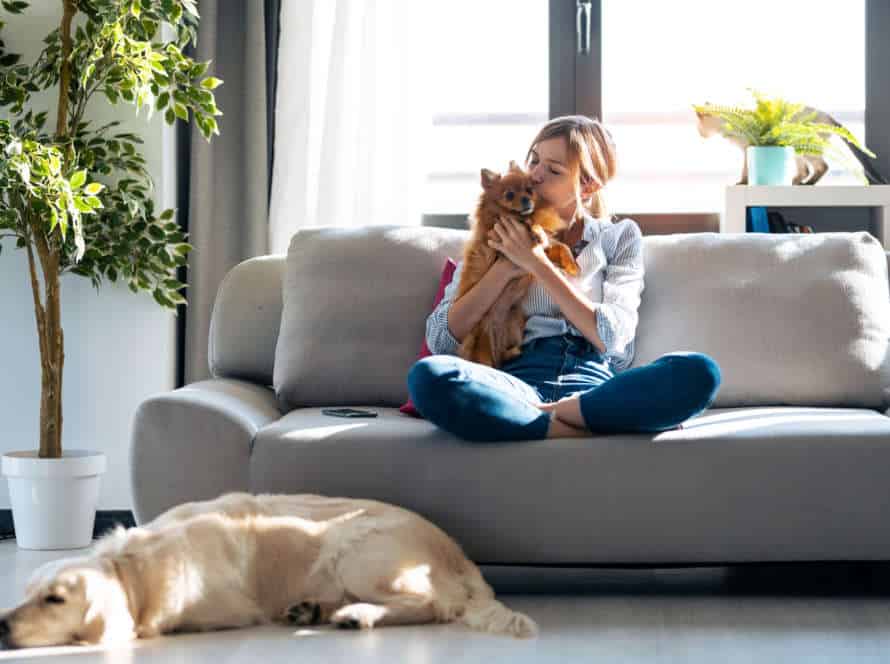Why Establishing a House Training Schedule is Important
A house training schedule is key for successful potty training! It educates your pup on responding to cues. This means they’ll be more predictable and easier to manage. Plus, you’ll avoid the hassle of having to clean up messes around the home. Let’s take a closer look at why house training schedules are so important.
Builds trust between dog and owner
Creating a house training routine is a must for a dog and its owner. Doing this minimizes accidents and sets out a routine your dog can trust. Here’s how:
- Pick a spot where your pup can go potty outside.
- Set up a feeding schedule and take your pup outside straight after eating.
- Take your pup outside at regular times like first thing in the morning, after naps, and before bed.
- Reward your pup with treats and praise when they go potty outside.
- Be patient and keep to the routine. Over time, your pup will learn to rely on it, and your bond will get stronger.
Establishes routines leading to success
Creating a house training plan is essential for training your pup. It can result in success by making a routine, being consistent, and improving communication between you and your furry pal.
To help you build a house training plan for your pup, try these steps:
- Choose the right schedule based on age, breed, and health of your dog.
- Have a consistent feeding routine that follows your schedule.
- Pick a spot outside and take your dog there regularly.
- Observe your pup’s behavior and look out for changes in their habits, which may show health problems or their needs.
- Show patience and stay consistent with your training, and reward your pup for good behavior. Avoid punishing them.
By setting up a house training plan and adhering to it, you’ll build a better relationship with your pet while keeping your home tidy.
Sets reasonable expectations for both owner and dog
Creating a house training routine is essential for effective dog training. It sets expectations for both pet and owner. Here’s how to do it:
- Set a consistent feeding schedule and stick to it.
- After each meal, nap or playtime, take your pup outside.
- Choose one spot in the yard you want them to go potty. Take them there each time.
- Reward and praise them as soon as they go.
- Every few hours take them out, increasing the amount of time they can hold their bladder. Be understanding with accidents as they learn.
Consistency is key – a house training schedule helps make a routine for both pet and owner.
Understanding Your Dog’s Habits and Needs
Creating a house training timetable for your pup is vital for a healthy bond between you and your doggy. Get to know their habits and needs so you can make a plan that’s good for the both of you. It’s essential to comprehend how your particular dog learns and responds to orders. This is the key to successful house training!
Learn when your dog needs to go
Creating a potty-training schedule for your pup depends on understanding their habits and needs.
Look for signs that your pup needs to go, like restlessness, whining, barking, sniffing, scratching, circling, pacing, standing at the door, or suddenly stopping. Once you spot those signs, take your pup to the designated spot right away. They’ll eventually learn to associate that spot with going potty.
Be consistent and patient when training your pup. A tip: Sticking to a routine and treating them with praise and rewards will help in house training.
Understand the signs of a dog who needs outside
To make sure your pup is comfy and healthy, it’s vital to recognize when they need to go outdoors. Here are some usual signals:
- Restlessness & pacing – When they’re pacing around, they need to go outside.
- Sniffing – They can use their sniffer to explore and might sniff around before going to the loo.
- Whimpering & barking – When they start whining or barking, particularly after meals or naps, they need to go out.
- Frequent peeing – When they pee more often, this means they should go out more often.
Keep a close eye on your pup’s behavior and set up a consistent outdoor routine to stop any accidents and promote good habits. Pro Tip: Use positive reinforcement when training your pup. Praise and rewards for good behavior will encourage them to learn better habits and strengthen your bond.
Research the needs of your dog’s specific breed
Research your dog’s breed to establish an effective house training schedule. Different breeds have unique character traits and physical features. Small dogs may need to use the bathroom more often, whilst larger breeds can hold their bladder for longer. Some breeds may be independent and not respond to teaching, others are sociable and eager to please.
By understanding your dog’s breed-specific needs and habits, you can tailor your house training schedule. A routine feeding & toilet schedule plus positive reinforcement training is key for successful house training.
Creating a House Training Schedule
Creating a house training schedule for your pup? Essential! Be consistent and patient. Start small and build up difficulty. Let’s talk about the basics:
- Set a routine.
- Use positive reinforcement.
- Offer rewards.
- Don’t forget to be consistent.
- Increase difficulty as your pup gets better.
Determine the frequency of trips outside
Creating a house training routine for your pup means deciding how often to go outside. Your pup’s age, breed, size and bladder control will determine when it needs to pee.
For starters, puppies should go outside every two to three hours during the day. Plus, when they wake up, eat, and before bed.
Adults can usually hold their pee longer, but need to go out 3-4 times a day. Active and water-loving pups may need to go out more often.
Be consistent with the routine and give rewards when they pee outside. Pro Tip: Crate training can help too – most dogs don’t want to pee in their sleeping space and crates prompt them to wait until taken outside.
Decide on time blocks for feeding
Creating a house training schedule for your pup is important. Here are some tips:
- Set a regular feeding schedule that fits your daily life.
- Choose the number of meals based on their age and breed.
- Assign time blocks for feeding, with enough time for digestion before the next potty break.
- Take your dog out to go to the bathroom after each meal, within 15-30 minutes.
- Stick to the same schedule everyday, even on weekends, to make it easier to learn.
Pro Tip: Patience and consistency are key. With positive reinforcement and consistent training, your furry friend will learn fast.
Incorporate play and exercise into the schedule
Incorporating play and exercise into your house training schedule is essential for your pup. It keeps them in good shape and helps them expend energy so they don’t destroy anything. Here are some tips:
- Set aside a certain time each day to play and exercise, like morning or evening.
- Choose activities fitting your dog’s age, breed, and energy level. Examples: fetch, walks, agility training.
- Schedule 5-10 minute playtimes or exercise breaks throughout the day to keep pup entertained.
- Don’t reward your dog with playtime or exercise after accidents or not following the schedule. Reward them only after completing the training.
- Remember: consistency is key. Daily monitoring and patience are needed for a successful routine.
Training Tips for Success
Designing a reliable routine for potty training your pup is fundamental. With patience, constancy, and encouragement, you can invent a house-training plan that assists your dog to learn and recall when and where to do their business. Here are some hints for creating a successful house-training agenda for your dog:
Use positive reinforcement for good habits
Positive reinforcement is an effective way to teach your dog good habits. Here are some tips to help you use it for success:
- Fix a feeding and walking schedule for your pup.
- Watch them closely to figure out when they need to go.
- Give them treats, love, and words of praise when they go outside.
- If they have an accident indoors, don’t scold or punish.
- Just clean up the mess and focus them on going outside.
- Be consistent with your training. Stick to your schedule and keep rewarding good behavior.
Be consistent with the schedule
Having a steady training agenda for your pup is the secret to success in house training. Here are some hints to help you make an effective training schedule.
- Set a pattern: Feed your dog at the same time each day and take them on walks at the same time. This helps your dog realise when it’s time to go out and lessens the chance of accidents in the house.
- Keep a timetable: Make a timetable that involves regular walks, playtime, and training sessions. This helps your dog comprehend what you anticipate from them and diminishes the danger of disarray and tension.
- Use positive reinforcement: Reward your dog for successful potty breaks outside or for following your commands during training sessions. This helps to support great behaviors and encourages your dog to learn faster.
- Be patient and consistent: Patience is essential when it comes to house training. Stay consistent with your training schedule and be patient with your dog’s progress. In time, they will understand what is expected of them and become a well-trained companion.
Be patient and avoid punishing your dog for mistakes
When training your pup, patience is key. Never punish them for their mistakes. Consistency, positive reinforcement, and gentle guidance – these are essential for successful habit-forming. Here are some tips to help:
- Set a regular feeding routine and take pup out at the same times each day.
- Keep pup in a crate or puppy-proof room when unsupervised.
- Praise and reward pup for going outside. Do not punish for accidents inside.
- Anticipate pup’s needs – take them out regularly after naps, meals, and playtime.
With patience and persistence, pup will learn to follow the house training schedule and become a good household member.
Troubleshooting Common House Training Issues
House training a pup ain’t a piece of cake! Even if your dog usually sticks to their routine, issues can pop up. Accidents in the home? Pup won’t go outside even when taken to the spot? No worries! We’ll explore some common house training issues and solutions. Let’s get started!
Addressing accidents and mistakes
House training a pup may be hard. Mistakes are bound to happen. But, it’s necessary to address any issues that arise. Here are some common problems and tips on how to handle them:
Accidents
- Clean them up straight away.
- Use an enzymatic cleaner to get rid of any smell.
- Avoid punishing your pup; it could lead to negative connections with house training.
Difficulty with routine
- Create a consistent house training plan to help your dog learn quickly.
- Keep a journal to monitor progress and adjust the schedule.
Inconsistent progress
- Don’t give up if progress is slow.
- Keep training and reward your pup for good behavior.
- Patience and consistency are crucial for successful house training.
Overcoming resistance to the schedule
Creating a house-training routine for your pup is a must for a nice, obedient home. But, your pup might not be so keen on this. Here are some ways to help:
- Go slow – Your pup could be a bit overwhelmed if there’s sudden changes. Ease them into the new routine, and give them time to adjust.
- Use positive reinforcement – When they follow the routine, reward them with treats and compliments. This will encourage them to keep following the schedule.
- Be consistent – Stick to the schedule, even when away or on weekends. This builds trust, and soon they’ll know what’s expected of them.
Patience and persistence is key for house-training! By following these tips, you’ll be able to make a schedule that works for both you and your pup.
Working through setbacks and challenges
House training your pup can be tough. Knowing how to manage difficulties and challenges is the key to success. Here’re some common issues and how to deal with them:
- Issue: Your dog still has accidents, even though you’ve been sticking to the schedule.
Solution: Change the schedule. Take your pup out more often or adjust the time. - Issue: Your dog doesn’t respond to positive reinforcement.
Solution: Try different treats or rewards, or add playtime as a reward. - Issue: Your pup is anxious to go outside or pee in front of people.
Solution: Start with small trips outside and gradually increase the time. Make a secluded potty area or use a privacy screen.
Remember: House training requires time and patience. Stick to the schedule and use positive reinforcement. If needed, get help from a professional trainer.
Frequently Asked Questions
Q: What is a house training schedule for dogs?
A: A house training schedule is a plan that pet owners use to teach their dogs the rules of the house and how to “do their business” outside.
Q: How do I establish a house training schedule for my dog?
A: Establishing a schedule involves setting designated times for feeding, playtime, outside breaks, and crate time. Consistency is key. Use positive reinforcement and consistent commands to help your dog understand the routine.
Q: How often should I take my dog outside during the house training process?
A: During the house training process, it’s important to take your dog outside every 1-2 hours during the day and once during the night. This will help to establish a routine and minimize accidents inside the house.
Q: Should I use treats during the house training process?
A: Yes, positive reinforcement can be very helpful for house training. Treats can be used to encourage good behavior and let your dog know they’re doing a good job.
Q: What should I do if my dog has an accident inside the house?
A: If your dog has an accident inside the house, clean it up quickly and take your dog outside immediately. Avoid scolding your dog or punishing them, as this can create fear and confusion.
Q: How long does the house training process usually take?
A: The house training process varies from dog to dog and can take anywhere from a few weeks to a few months. Consistency, patience, and positive reinforcement are key to success.

